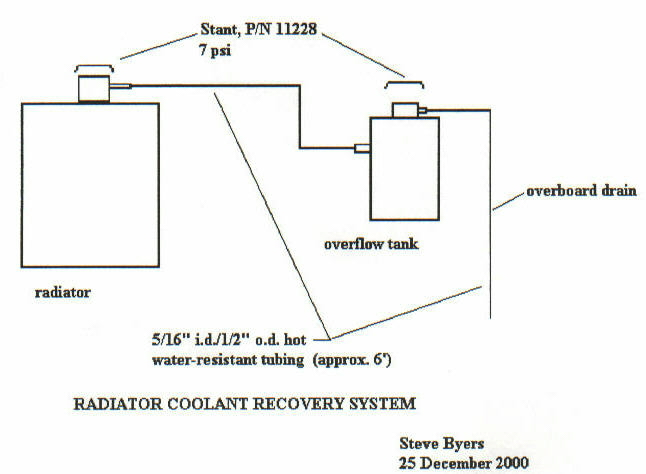 Technical Archives
Technical Archives

 Technical Archives
Technical Archives
This page was last updated on $Date: 2003/08/28 02:03:01 $.
I have struggled with the problem of high engine temperatures in my Big Healey (BJ8) ever since I bought the car in 1984. In an effort to make the engine run cooler I have: designed, built, and installed a radiator shroud to ensure all the air flow is through the radiator core; tried several different fans with 5 and 6 blades; installed a new radiator; mechanically and chemically cleaned the cooling passages of the engine block during the engine rebuild, and used Red Line's Water Wetter. Still, in the summer time my engine likes to run at 200 - 212 degrees F on the gauge. That doesn't give much margin when having to stop for a traffic light or getting caught in traffic.
Is the gauge inaccurate? I don't think so. During two different trips to cooler climes up north last summer, I noticed that the engine ran at a more reasonable 180 - 190 consistently, then returned to its usual 200 - 212 as I approached home. I came to the conclusion that the cooling system on the cars is so marginal that it cannot cope with the temperatures frequently into the mid-to-high 90s during the summer where I live, on the coast of North Carolina. Finally, I got tired of watching the coolant wasted as the hot engine belched out a pint or so each time I stopped for gas or at a rest stop. Then, having less coolant, it wanted to run hotter, belch out more coolant during stops, etc., until it was low on coolant. I resolved to do something about it - to install a coolant recovery system such as modern cars have.
From a local junkyard, I obtained a brass coolant recovery tank from an MG Midget (I also have a '73 Midget with the tank, which is what gave me the idea. I also like the fact that the tank from the junkyard is vintage British!). The MG tank is from a 15 psi cooling system, while the Healey uses a 7 psi system. Next, I obtained two 7 psi radiator caps from the local auto parts store (Stant, part number 11228). These caps fit the necks of both the Healey radiator and the Midget overflow tank, but they seal only the overflow tank. The length of the spring on the cap is too short to seal off the overflow vent tube in the neck of the Healey radiator, and that is good. We are going to transfer the sealing function from the radiator cap to the overflow tank cap.

I removed the rubber overflow tube from my Healey radiator and obtained about 6 feet of clear plastic tubing (5/16" i.d. and about 1/2" o.d., hot water resistant) at a home improvement store. The tubing is attached at one end to the overflow outlet of the radiator and the other end about 3 feet away is attached to the inlet tube of the Midget overflow tank. A separate length of tube serves as the overboard vent for the overflow tank. The tube connection to the inlet of the overflow tank is secured with a small hose clamp, but the small clearance between the radiator overflow outlet and the top of the header tank precluded using a clamp there. I used a small piece of stainless steel safety wire twisted with a pair of pliers to secure this end of the tube to the radiator (using care not to cut the tube by over-twisting the wire). I located the tank in the space that would be occupied by the brake and clutch master cylinders on a right-hand drive car. The tank just sits in the space and doesn't need to be firmly attached. I routed the overflow tube for the tank down past the brake booster, to vent onto the pavement below. It is desirable to mount the overflow tank as high as possible in relation to the radiator, but the underbonnet area of the Healey doesn't leave many options in that regard. The location I chose for the tank is just a convenient one and keeps the tank secured enough not to need a mounting bracket.
The overflow system works as intended. It does not contribute much to keeping the engine cool, because when the engine is hot the flow is all from the radiator to the tank. When the engine cools, a slight vacuum from the radiator pulls the coolant back out of the overflow tank into the radiator. However, a year after installing the system, I have yet to have to add coolant. The total cost of the overflow tank ($20), tubing ($2) and two radiator caps ($5 each) was about $30 and only required about 15 minutes for the installation, not including painting the junkyard overflow tank black.
Any suitable overflow tank can be used, and I have seen overflow systems for sale in auto parts stores.